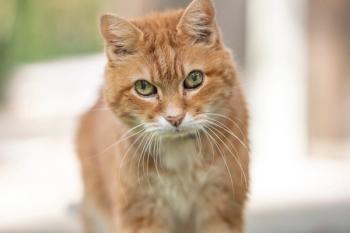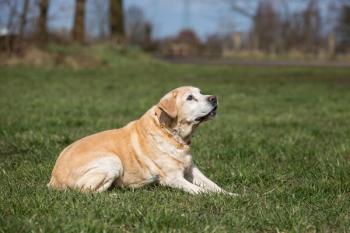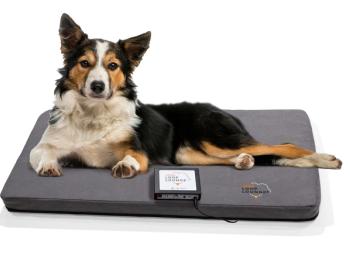
Preventing and treating hypotension (Proceedings)
One of the most important assessments a veterinarian can make is whether or not oxygen delivery is adequate. Unfortunately, it is not possible to easily or directly assess oxygen delivery in our patients.
Objectives
Discuss the physiological ramifications of hypotension
1. Describe the methods used to detect hypotension
2. Discuss the approach to treating hypotension in the anesthetized patient.
• Hypotension is one of the most common adverse events associated with general anesthesia
• Blood pressure is used as an indicator of adequate blood flow to tissues
• Blood pressure monitoring is an important part of patient assessment-especially when
1. anesthesia time will be prolonged
2. an animal has concurrent disease (i.e., liver, kidney, hepatic, cardiac)
3. blood loss is expected as part of a procedure
4. cardiovascular stability is questionable
5. the procedure is an emergency procedure
• Hypotension can lead to morbidity and mortality
Morbidity associated with hypotension may NOT be recognized by the veterinarian.
Physiology and Physics:
One of the most important assessments a veterinarian can make is whether or not oxygen delivery is adequate. Unfortunately, it is not possible to easily or directly assess oxygen delivery in our patients. Oxygen delivery can be defined as follows:
Oxygen Delivery = Blood Flow x Blood Oxygen Content
Pulmonary function is certainly and important contributor to oxygen delivery, but this presentation will focus on the blood flow and its relationship to blood pressure.
Blood flow is most commonly quantified using Doppler ultrasound monitoring (transthoracic or esophageal), lithium dilution methodology, or thermodilution techniques. In general, these techniques are expensive, technically demanding, or invasive. Thus, measurement of blood flow is limited in clinical veterinary medicine. Instead, we make assumptions about cardiac output from blood pressure measurements.
Blood pressure is related to blood flow as follows:
Mean Arterial Blood Pressure = Blood Flow x Vascular Resistance
Note that blood pressure is related to blood flow. This is the reason for using the measurement as an indicator of perfusion. However, vascular resistance also determines blood pressure. Thus, it possible to have an increase in blood pressure in spite of a decrease in blood flow. Consider the administration of acepromazine compared to the dexmedetomidine in small animal patients as an illustration of the disconnect between changes in blood flow and blood pressure: In general, acepromazine is associated with vasodilation and hypotension, but with minimal decreases in cardiac output. Dexmedetomidine is associated with vasoconstriction, decreased heart rate, and increased blood pressure. Although dexmedetomidine administration causes increased blood pressure, it may also decrease organ and total blood flow.
In general, normal blood pressure in awake dogs and cats is considered to be similar to that seen in human beings (systolic blood pressure = 120 mm Hg, diastolic blood pressure = 70 mm Hg). In actuality, blood pressure is probably somewhat higher in our awake, normal dogs and cats. In anesthetized animals, systolic pressure is considered to be inadequate if it is less than 80-90 mm Hg. Mean blood pressures lower than 60-70 mm Hg are considered inadequate in anesthetized small animal patients.
Blood Pressure Measurement
Indirect Methods
• Heart Sounds
o Auscultation of heart sounds using a stethoscope or esophageal stethoscope can be used to assess blood pressure
o Very subjective and inaccurate
o Important monitoring tool:
> Heart rate
> Heart rhythm
> The absence of heart sounds is certainly an important clinical observation!
• Palpation of Peripheral Pulse
o Cheap, easy, noninvasive
o Subjective
o Pulse pressure is determined by the difference between systolic and diastolic pressure
> May not necessarily reflect mean blood pressure
Doppler ultrasonic flow detectors
• A small ultrasonic probe is secured over a peripheral artery and is acoustically coupled to the skin using a water-soluble ultrasound gel.
• The probe produces audible sounds when blood flow is detected.
• An inflatable cuff is placed proximal to the probe and is used to occlude flow while pressure is simultaneously measured.
o Cuff with should be approximately 40% of the circumference of the limb at the site of placement. Distal tibia, forearm, and tail base have all been used as sites for cuff placement. The cuff should be positioned at the level of the heart base A correction of 7 mm Hg should be applied for every 10 cm that the cuff is above or below the heart. If the cuff is above the heart, the correction factor should be added to the observed reading. If the cuff is below the heart, the correction factor should be subtracted from the observed reading.
o The cuff is inflated until the flow signal is lost.
o Pressure is monitored will air is slowly released from the cuff-manometer system.
o Pressure is noted when flow is detected.
• Pressure is related to systolic blood pressure
o In cats, blood pressure measured with this technique are usually 10-15 mm Hg lower than systolic pressure, and may more closely approximate mean blood pressure.
In general, a systolic blood pressure of >80 mm Hg is considered adequate in the anesthetized animal.
Kinetoarteriography is a similar technique, but it measures arterial wall motion caused by blood flow, and can be used to detect systolic diastolic and mean blood pressure. IT is not commonly used.
• Automated Oscillometric Sphygmomanometry
o Uses a cuff system that detects pressure oscillations associated with inflow of blood to determine systolic, diastolic, and mean blood pressure.
o Fairly accurate in medium to large dogs.
o Movement, severe hypotension, bradycardia, and small size may affect accuracy.
o Cuff placement and size are the same as for the Doppler method (see above)
Direct Monitoring
Although direct blood pressure monitoring is not done during routine surgery, it is an important part of monitoring for critical patients during anesthesia or in the intensive care unit. Placement of an arterial catheter also allows for intermittent blood sampling.
• Advantages:
o Accurate
o Real-time measurement
o Access for blood sampling
• Disadvantages:
o Technically challenging: difficult in small patients
o Invasive
o Potential for morbidity (hemorrhage, infection)
o Expensive equipment (aneroid manometer may be used to decrease cost).
Sites: dorsal pedal (most common), femoral, coccygeal, lingual arteries. Surgical approach may be used to facilitate access in small or hypotensive patients.
Treatment of Hypotension
Treatment of hypotension usually includes four components:
• Volume therapy
o Usually the first step in treatment
o Fluid therapy
o CVP monitoring is useful in determining volume requirements
• Inotropes
o Improve cardiac performance
• Vasopressors
o Usually reserved for distributive shock (i.e., endotoxemia, sepsis)
• Anesthetic management
o Decrease the use of drugs that promote hypotension
o Application of balanced anesthesia techniques (usually opioid-based)
Aggressive treatment of hypotension is delayed if blood loss is ongoing (hypotensive resuscitation).
Caution must be exercised when fluids are administered to patients with cardiac disease or with increased intracranial pressure.
Crystalloid Fluids.
• Crystalloid fluids are commonly given at 5-10 ml/kg/h during anesthesia.
• Replacement type fluids are used as their electrolyte content resembles that of plasma, and they may be safely used at higher infusion rates (lactated Ringer's, Normosol-R).
• The shock dose of fluids is 90 and 60 ml/kg/h in dogs and cats, respectively.
• 10 ml/kg boluses may be given in hypotensive patients and response assessed.
• Short-lived response (<25% of infused fluid remains in vascular space 1 h after administration)
Colloids
• Large molecular weight substances
• Plasma expanders
• Consider when albumin <2.0 g/dl or total protein <4 g/dl
• Natural: Albumin, plasma, blood
• Synthetic: hydroxyethylstarch, dextrans, gelatin, Oxyglobin (availability?)
• Hydroxyethyl starch and Dextran 70 are typically administered at 4-5 ml/kg during anesthesia
• Both expand plasma volume by ~1.4 times the infused volume
• A total dose of 20 ml/kg/day is usually considered the maximum dose
• Hydroxyethyl starch has a longer duration of action than Dextran 70.
• May accentuate coagulopathies (particularly Dextrans)
• Oxyglobin is a blood substitute that has significant oncotic effects in addition to its oxygen-carrying ability. It may be used for blood pressure/volume support in hypotensive patients.
o Infusion rates must be particularly restricted in cats to prevent volume overload.
Inotropes/Vasopressors
Dopamine
• 2-10 mcg/kg/min IV
• Effects depend upon dose rate: low doses-dopaminergic effects, medium dose rates-positive inotropic effects, high doses-vasoconstriction.
• Heart rate increases with increasing dose
• Previously advocated at low doses for renal protection. Has not proven beneficial for this purpose.
Dobutamine
• 2-10 mcg/kg/min IV
• Positive inotrope
• little effect on vascular smooth muscle
Epinephrine
• 0.05-0.4 mcg/kg/min IV
• Positive inotrope, chronotrope, vasoconstrictor
Norepinephrine
• 0.05-0.4 mcg/kg/min
• Primarily a vasoconstrictor
• Usually used in conjunction with an inotrope
• Requires careful monitoring of cardiac output
Ephedrine
• mg/kg IV
• Vasoconstriction, bronchodilation, increased cardiac performance
• Short (5-15 min) duration of action
• Controlled drug
Vasopressin
• Vasoconstrictor
• Used in cardiopulmonary arrest-replaces epinephrine in some situations
• 0.1-0.8 U/kg recommended dose
• 0.04 U/kg/min infusion rate
Anesthetic Management
Drug selection and dose
Opioids, etomidate, diazepam, and ketamine are all drugs that are frequently used in patients that are expected to experience hypotension.
Summary
Untreated hypotension can lead to morbidity and mortality in anesthetized small animal patients.
Objective monitoring is the only way to reliably detect hypotension.
Blood pressure monitors are NOT always accurate.
Anesthetic management, fluid therapy, inotropes, and vasopressors may all be used to treat hypotension.
Vasocontriction alone may increase blood pressure, but may result in decreased blood flow.
References/Suggested Reading
Wagner AE, Brodbelt DC. Arterial blood pressure monitoring in anesthetized small animals. Journal of the American Veterinary Medical Association. 210:1279-1285, 1997.
McGhee BH, Bridges EJ. Monitoring Arterial Blood Pressure: What you may not know. Crit Care Nurse 11: 60-79, 2002
Newsletter
From exam room tips to practice management insights, get trusted veterinary news delivered straight to your inbox—subscribe to dvm360.





